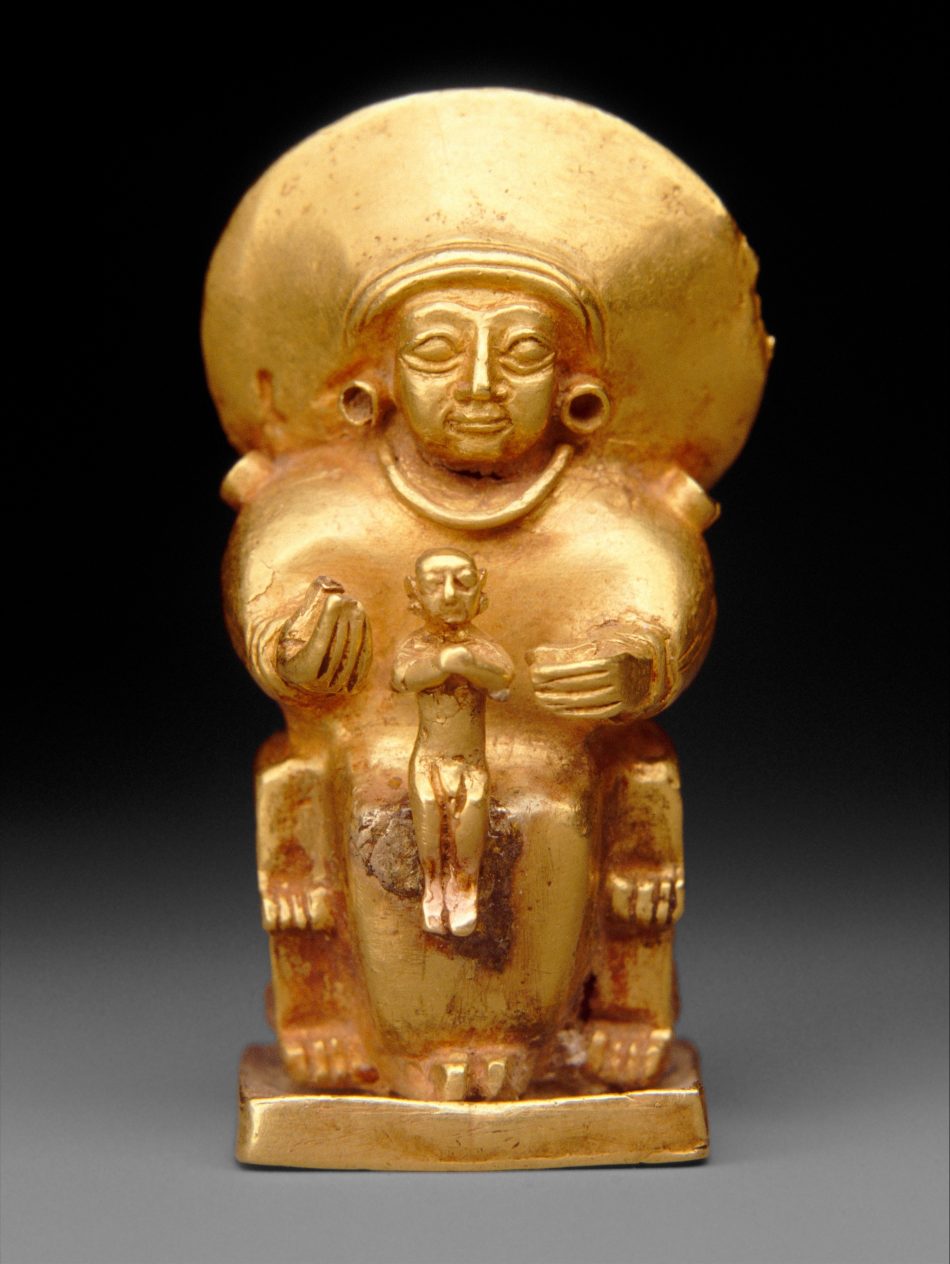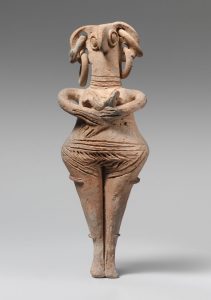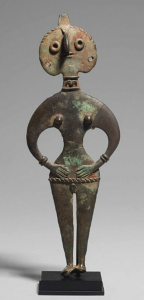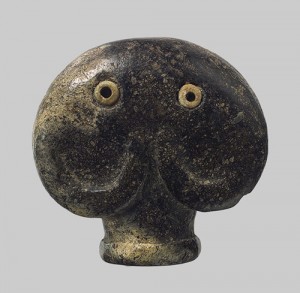Seated goddess with a child, Hittite Empire, Anatolia. Gold. OASC The Metropolitan Museum of Art.
- Period:
- Hittite Empire
- Date:
- ca. 14th–13th century B.C.
- Geography:
- Central Anatolia
- Culture:
- Hittite
- Medium:
- Gold
- Dimensions:
- H. 4.3 cm, W. 1.7 cm, D. 1.9 cm
- Classification:
- Metalwork-Ornaments
- Credit Line:
- Gift of Norbert Schimmel Trust, 1989
- Accession Number:
- 1989.281.12
The original description says:
This tiny pendant was probably intended to be worn round the neck as an amulet. Small gold figures with loops survive from Iran, Mesopotamia, the Levant, and Egypt, attesting to the widespread use of such objects. Similar objects from Hittite culture suggest that these small figures were portable representations of Hittite gods. The figure shown here, cast in gold using the lost-wax process, is of a seated goddess in a long gown, with large oval eyes and a thin mouth with creases at the sides. She is wearing simple, looped earrings and a necklace. Her disk-like headdress probably represents the sun, which would lead to the conclusion that this may be the sun goddess, Arinna, a major Hittite divinity. A loop for suspension protrudes from the back of the headdress. On her lap the goddess holds a naked child, cast separately of solid gold and then attached. The chair on which they are seated is backless and has lion paws.
The circular crown resembles these more abstract figurines from elsewhere:








